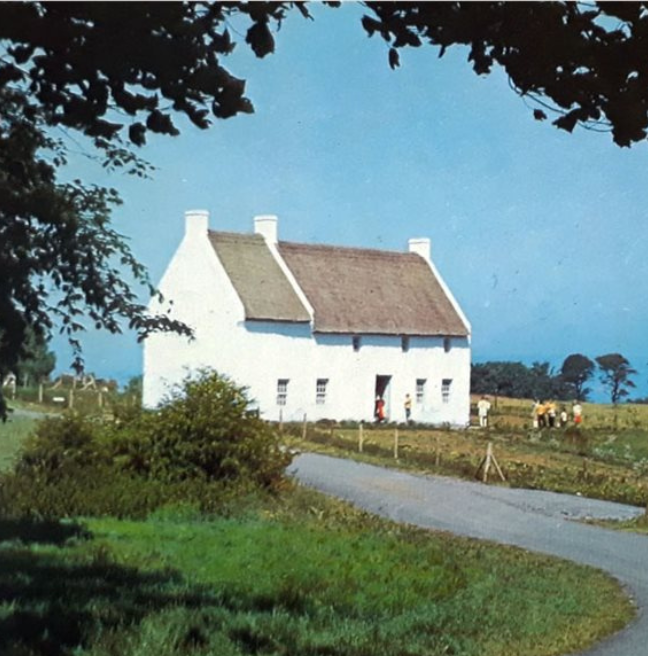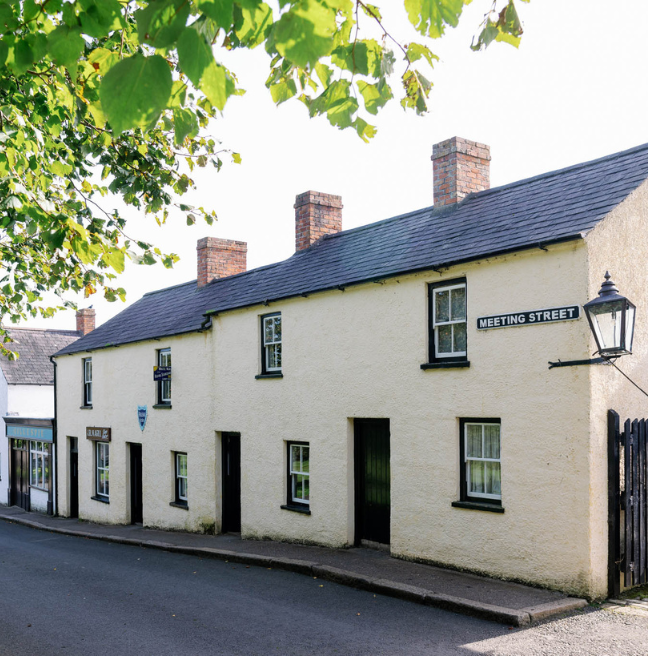
The Hyndman Family
Originally from the rural townland of Coshkib, a few miles north of Cushendall in Co. Antrim, Coshkib Hill Farm was formerly owned by the Hyndman family.

The Hyndman Family
Daniel Hyndman married Margaret Murdough in 1871 and they went on to have seven children during the 1870s and 1880s.
John, their first son born in 1871. He is listed as deaf on the 1901 census. He worked as a gardener at a local ‘big house’ and never married. He died of tuberculosis, an infection that usually affects the lungs, in 1920.
Matilda, born the year after John, married John Donaldson, a tailor, in 1897 and they had six children. Sadly, one of their daughters died in infancy in 1900 and another daughter died at the age of 12 in 1911. Matilda died in childbirth, also in 1911, just a couple of weeks before her daughter passed away.
Thomas, born the year after Matilda, married Annie McKeegan in 1902. They had three children, one of whom died in infancy in 1904. When Annie died in 1905, Thomas returned to Coshkib with his two young daughters and worked as a road contractor. He died of possible tuberculosis in 1916.
Bridget (Biddy), born in 1878, married William McAllister, a sailor, in 1901. They had five children, two of whom were twins. Sometime after William died in 1912, Biddy went to live with her brother Daniel (Dan) at Coshkib.
Robert, born in 1881, married Mary McKeegan (Annie McKeegan’s cousin) in 1903. They had two children, born within a year of each other. He was often hired by other farmers for skilled horse work.
Daniel (Dan), born in 1884, never married. He inherited the farm after his parents died and lived there until his death in 1953.
Margaret was Daniel and Margaret’s youngest child, born in 1886. Little else is known about her, though she is listed as a visitor at her sister Matilda’s house in 1911 census and she was the death register informant for her brother Thomas in 1916 and her brother John in 1920.

Life at Coshkib Hill Farm
In 1900 Daniel Hyndman had 17 acres of mixed land and shared common grazing of another 17 acres of moor with two neighbours. Whilst he cultivated oats, potatoes, hay and some turnips, the farm was best known for its cattle and horses.
The family kept five or six dual-purpose shorthorn cows, which could be housed in the byre at the lower end of the farmyard, or left to graze on the hillside. Daniel adopted the practice of ‘grazing the long acre’ – he would often be seen around five or six o'clock in the morning during the summer, tending to his cattle as they ate grass on verges along the roadside between the farm and the townland of Moneyvart about a quarter of a mile away.
Daniel and his sons were skilful horsemen and were leaders in the move towards larger horses in the Coshkib area which enabled farmers to expand tillage on their farms and hastened the eventual extinction of the Cushendall pony.
Daniel’s wife Margaret kept several dozen hens and sold the eggs to shopkeepers in Cushendall. The family also kept two sows of the Large White Ulster breed. Litters of piglets produced by the sows were reared in about six weeks and were sold at Cushendall fair. When the sows were giving birth, they were sometimes brought into the house. The settle bed in the kitchen provided a barrier which prevented the sow from rolling over on to the piglets and crushing them – a common problem!

Greyhounds
The Hyndman family reared and kept a few greyhounds at Coshkib. The dogs were valued for their speed and coursing abilities on the high open moors of the Glens. Coursing was a favoured sport for many farmers and rural labourers. A successful outing could result in a hare, rabbit or game bird for the cooking pot.
Commercial greyhound racing was an established sport throughout Ireland and Britain. According to Hyndman family lore, their own, special greyhound 'Donal' could even claim kinship with the 'Immortal Black'. This was Master McGrath, a champion Irish greyhound and a triple winner of the Waterloo cup in 1868, 1869 and 1871. A local 1930s ballad entitled 'Dan Hyndman's Greyhound' celebrated the dog's outwitting of the local gamekeepers!

A Cèilidh House
When Dan and his sister Biddy were living in Coshkib Hill Farm, the home became well known as a cèilidh house. Neighbours often gathered there in the evenings. Family and neighbours sat around the fire and talked of local affairs and of past times. Evening activities included a friendly game of cards, a story well told, a tune played on the accordion or a song sung. The people who cèilidh-ed together in the Coshkib area often worked together too.
Dan Hyndman was a keen storyteller and Michael J. Murphy of the Irish Folklore Commission in Dublin interviewed both Dan and Biddy on a number of occasions in the early 1950s.
The last big event to be held in the house was Dan’s wake in 1953. Both Michael J. Murphy and the Ulster poet John Hewitt attended the wake, after which Hewitt wrote his poem ‘The Wake’. Both men latterly attended the opening of Coshkib Hill Farm at the museum.

After Dan Hyndman’s death, the farmhouse became unoccupied. The outbuildings and land were sold to a neighbouring farmer and the old house and outbuildings were used as general agricultural stores. In the mid-1960s the Coshkib farmhouse and outbuildings were acquired by the Folk Museum and formally opened in August 1965.
You might also like
The McCullagh Family
The Old Rectory is probably one of the most recognisable and picturesque buildings at the Ulster Folk Museum. Learn more about the McCullagh family who lived there for many years.
Residents of Duncrun Cottier's House
Several generations of two local Magilligan families lived in the house. Find out more about their lives and their history.
Life on Meeting Street
In 1981 a terrace of four houses opened at the Ulster Folk Museum. Originally from Meeting Street in Dromore, Co. Down, the houses were acquired prior to their planned demolishment.












